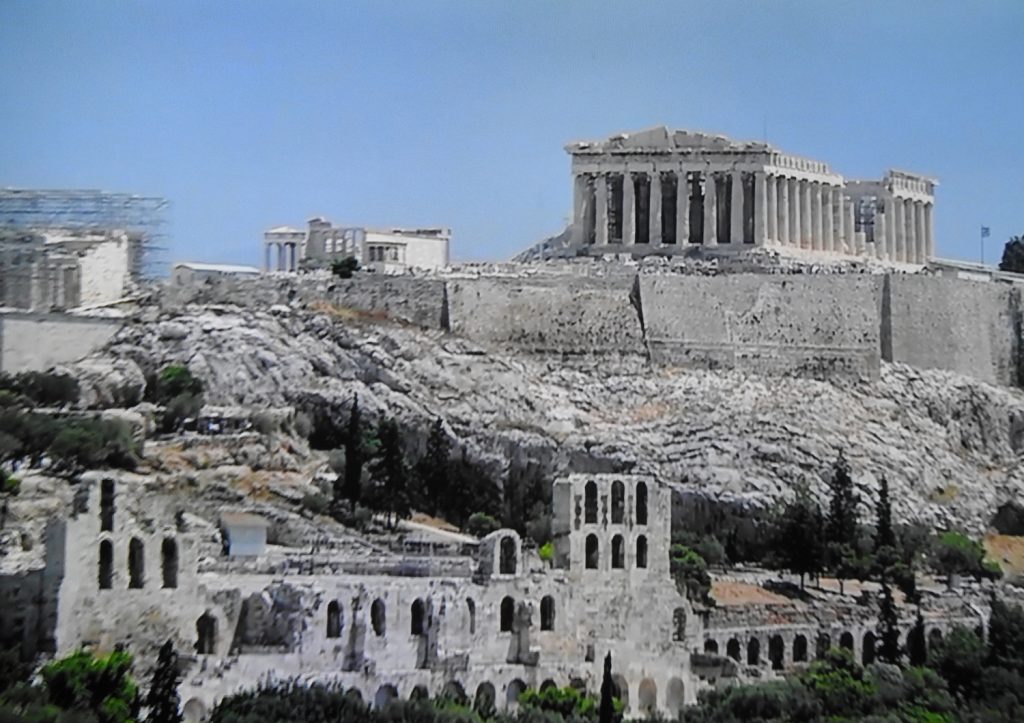
In the summer of 1992 I went with Eckerd College and their PEL summer program to Greece. Twenty six of us flew to Athens, we stayed in a hotel that, from the rooftop patio, we had a great view of the Parthenon. We had to write papers as to what we saw and experienced.
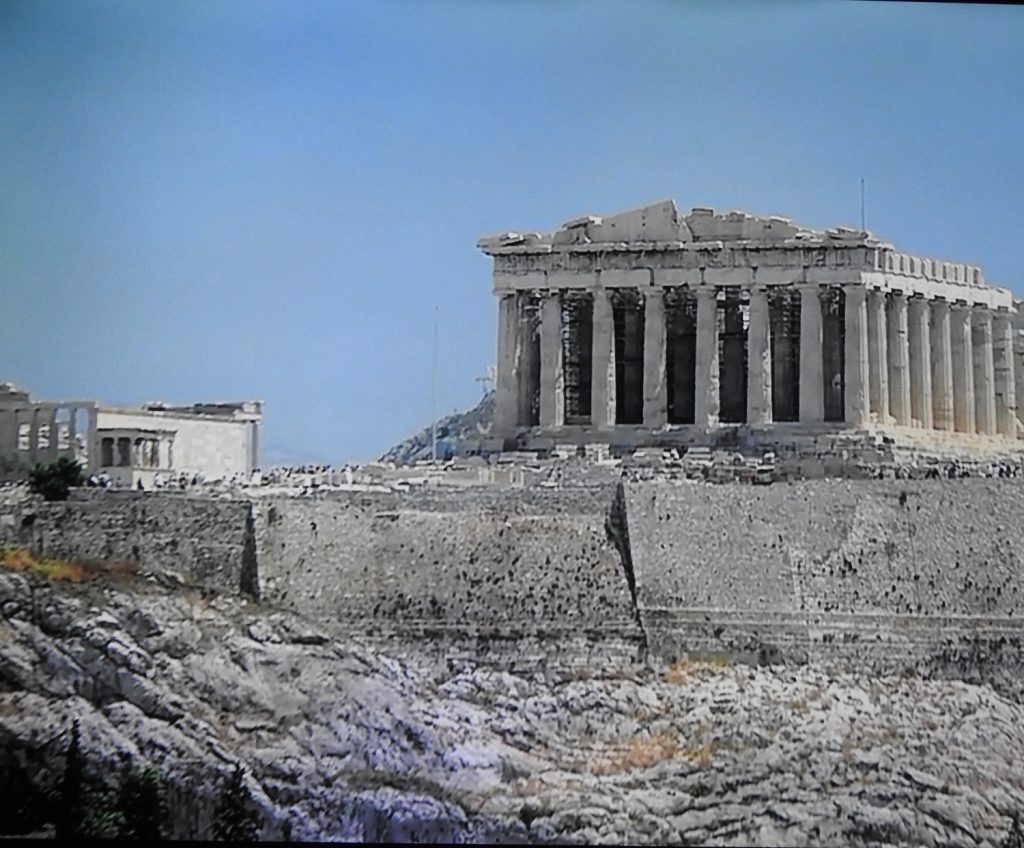

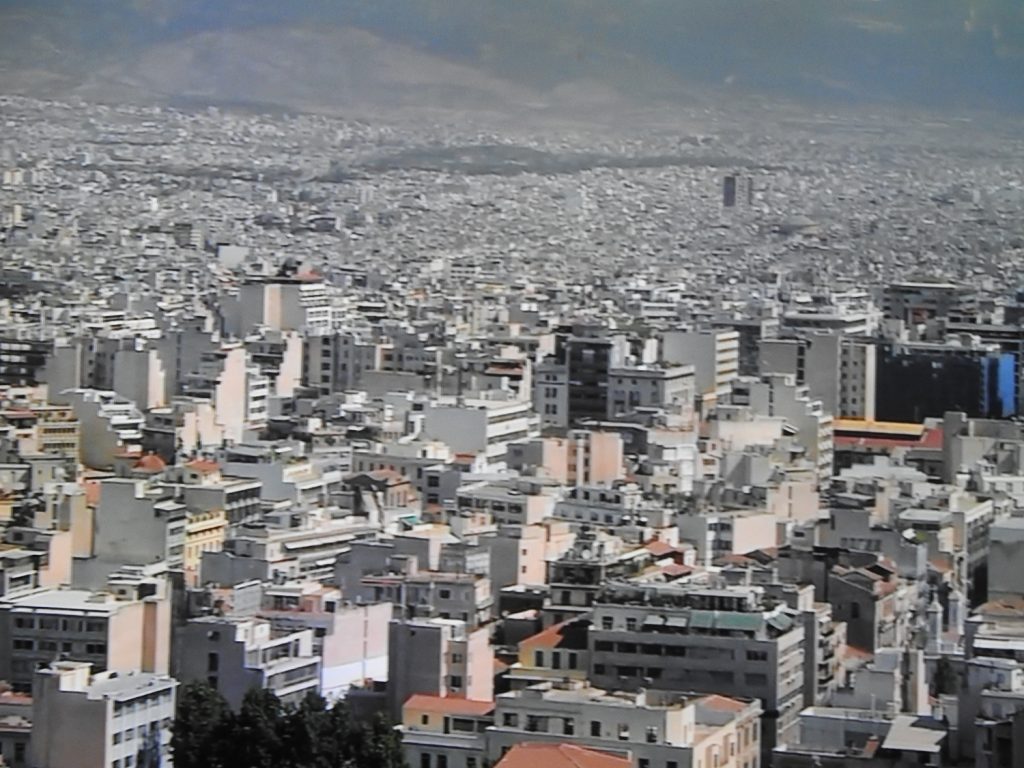


DAY TRIP TO DELPHI
After spending time in Athens we took a bus along the north side of a body of water where there were hundreds of abandoned ships, all awaiting recycling I guess, and ended up in Delphi.
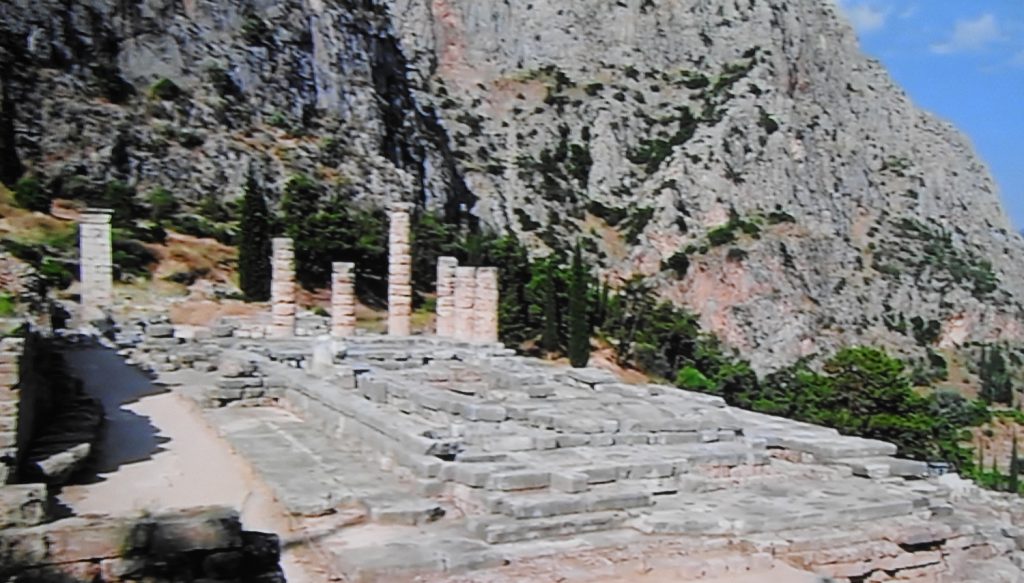
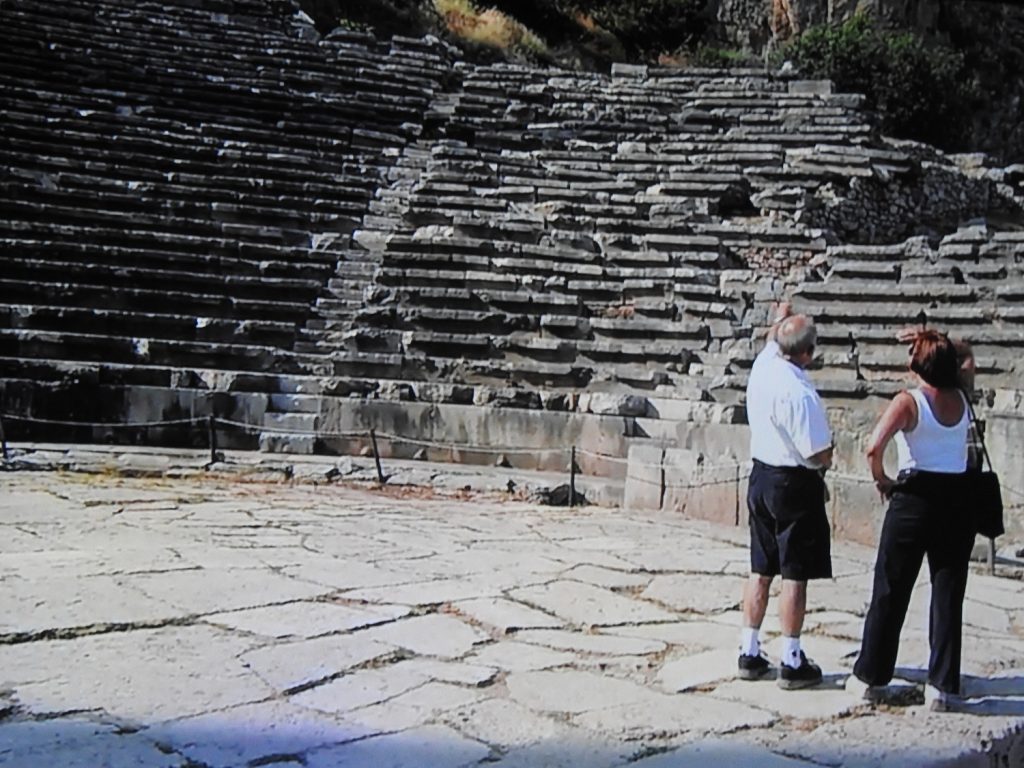
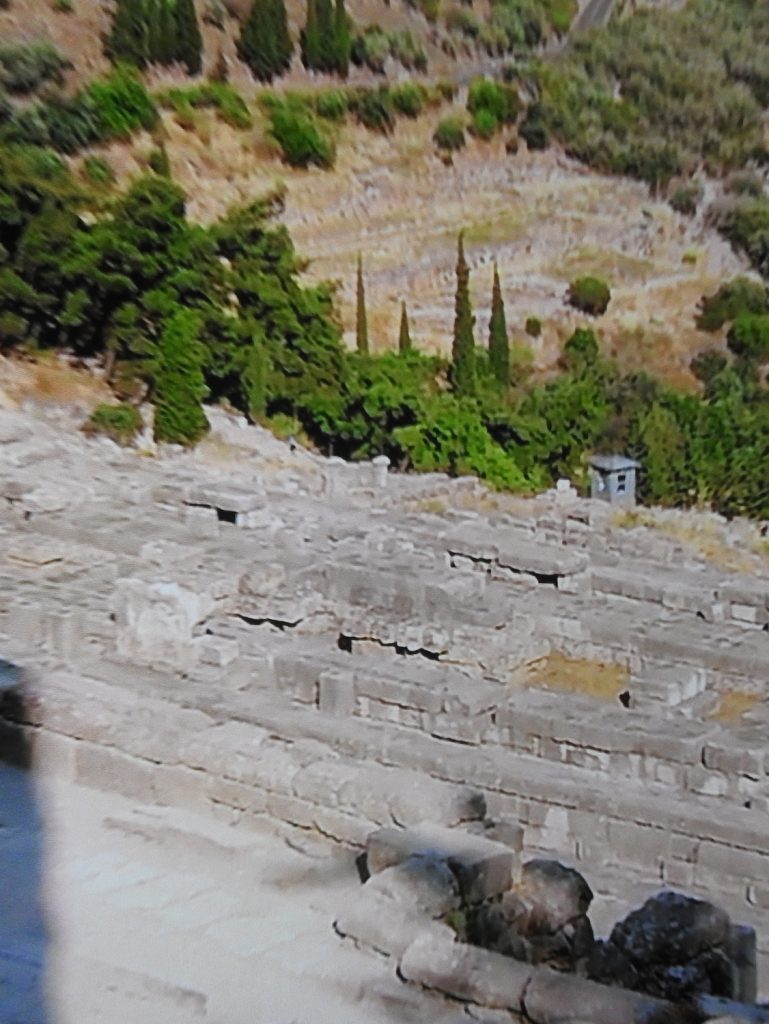

Recent geological investigations have shown that gas emissions from a geologic chasm in the earth could have inspired the Delphic Oracle to “connect with the divine.”
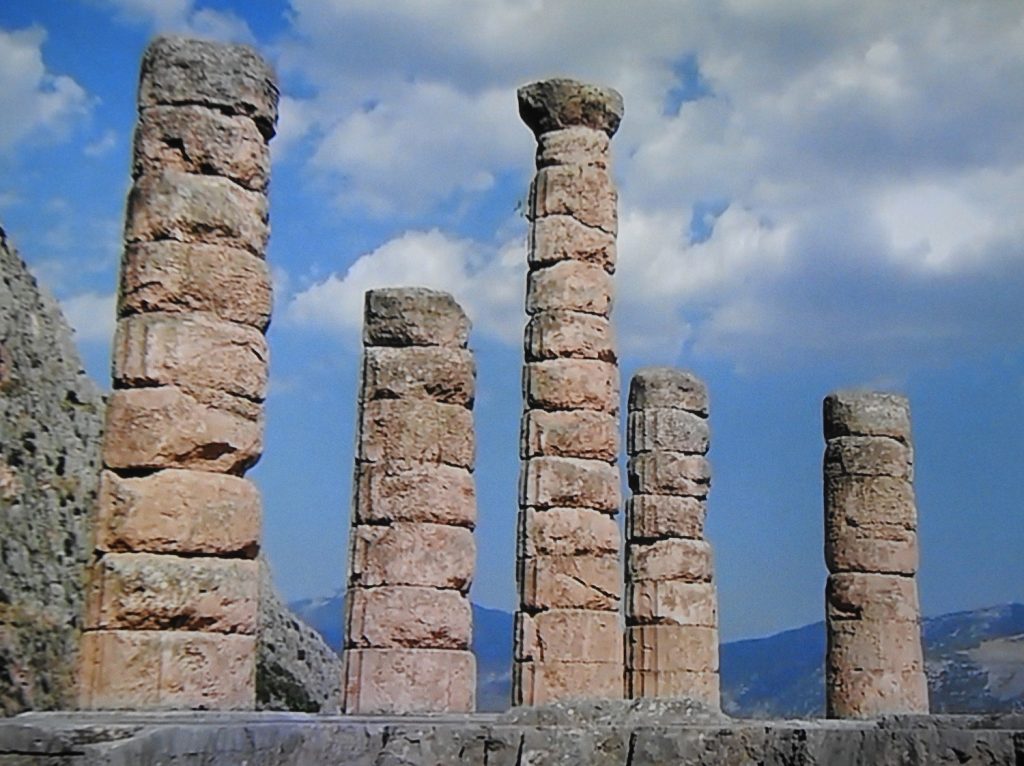
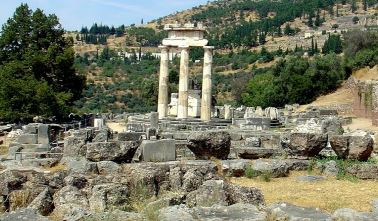


DAY TRIP TO OLIMPIA
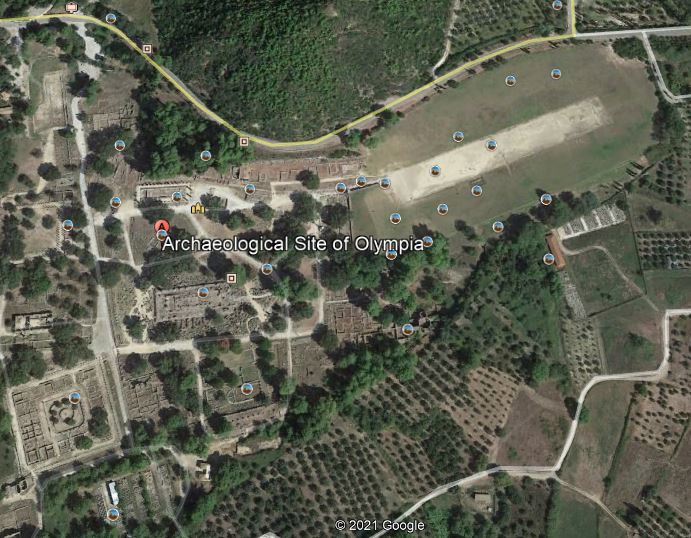
It was the year 1972. The Olympic Games were to be held in Munich, West Germany in August. We were at Olympia, where the first Olympic Games were held. We were standing beside a low wall. Our guide told us that the day before, at this very spot, a large magnifying glass was held up to the sun to ignite the torch that was to be carried around the world to begin the games. Goose bumps!
We walked over to the running track. One of the ladies on the trip said that this is the reason she came of the trip, to run on the track at Olympia. She took off running, I walked over to where the spectators sat and found an olive tree. I broke off a few branches and made a wreath. When she finished the run I presented her with the wreath and placed it on her head.

STOP AT CORINTH

On the way from Athens to Olympia we stopped at Corinth. Corinth is the town where Paul wrote his letters to the Corinthians (his letters, 1 Corinthians, and 2 Corinthians, are in the Bible). The guide took us to a low platform where it is said that Paul spoke to the Corinthians from that spot. We got to stand there as well.
I was more interested in the canal! The four mile long Corinth Canal connects the Gulf of Corinth (in the Ionian Sea) with the Saronic Gulf (in the Aegean Sea). It cuts through the narrow Isthmus of Corinth and separates the Peloponnese from the Greek mainland. The canal was dug in 1885 through the isthmus at sea level and has no locks.

SIDE TRIP TO MYCENAE
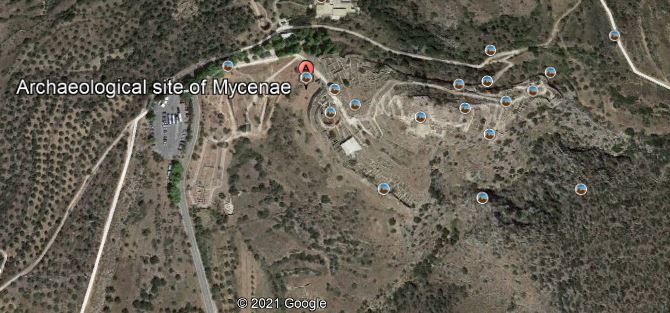
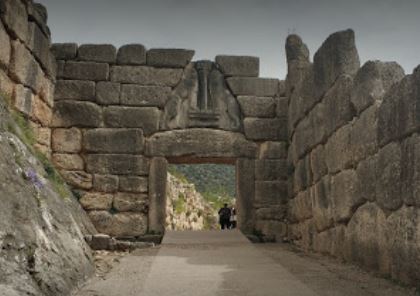
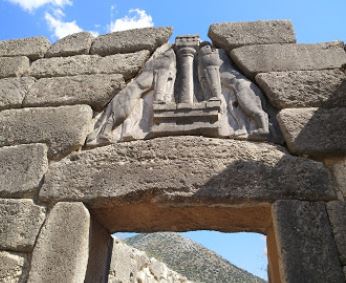
Mycenae is famous for its “Lion Gate”. The Lion Gate was the main entrance of the Bronze Age citadel of Mycenae, southern Greece. It was erected during the 13th century BC, around 1250 BC in the northwest side of the acropolis (acropolis means high point) and is named after the relief sculpture of two lionesses or lions in a heraldic pose that stands above the entrance.

SIDE TRIP TO CRETE
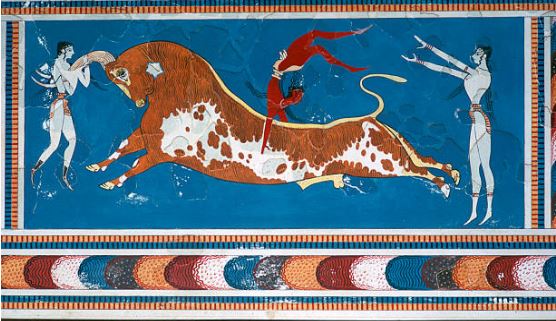
We flew to Heraklion, home to the renowned Heraklion Archaeological Museum, housing Minoan artifacts, and took a bus to Knossos, a Bronze Age settlement. a palace and surrounding network of buildings that were the capitol of the Bronze Age culture that dominated the Aegean from 1600 to 1400 b.c..
An intricate, multistoried palace was unearthed there. Each section had a specific use. The western area, with large rooms and a theater, was built for administrative and court functions. The eastern area consisted of smaller rooms with verandas and numerous interior frescos characteristic of Minoan art, many portraying men and women leaping bulls. These frescoes, along with several artifacts from cultures foreign to Crete, suggest that the Minoan civilization at its zenith was a highly developed society that routinely traded with its Mediterranean neighbors.

Our guide said that the frescos were evidence of men and their pursuits. Our Eckerd College guide differed, she said that it was a feminist society!
Archaeological evidence also suggests that this “Great Palace of Minos,” as Evans called it, was destroyed by fire in 1400 b.c.. One item I recognized as we were looking at one of the beautiful frescos was the rock beam that was holding up the floor above. It was in the shape of a dumbell. An early version of an I beam! The builders had taken a square rock beam and had carved out the sides. They had figured out that that the rock on the sides was excess weight and that the beam would be stronger without it!

Another observation was on an upper floor there was a room where in one corner there was an area about 10 feet square with low 6 inch high wall around it. There was a hole in one corner. It looked for all purposes a shower area!
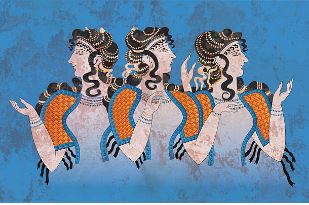
On the grounds was the maze where the legendary labyrinth of King Minos was said to have been. The Labyrinth was an elaborate, confusing structure designed and built by the legendary artificer Daedalus for King Minos of Crete at Knossos. Its function was to hold the Minotaur, the monster eventually killed by the hero Theseus. King Minos was embarrassed by the Minotaur, but did not want to kill the Minotaur, so he hid the monster in the Labyrinth. According to the myth, Minos was imprisoning his enemies in the Labyrinth so that the Minotaur could eat them.
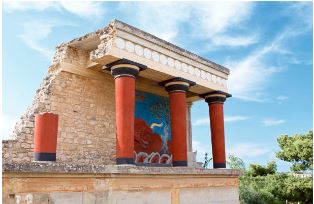
The Palace of Minos at Knossos had an elaborate system of drains, ducts, and pipes that brought a water supply to the community and improved its sanitation, innovations once thought only to have emerged in later, more advanced Greek and Roman civilizations. The palace also contained workshops and massive storage compartments for agricultural products, and the urban area around the palace was connected to outlying towns and ports by a network of paved roads. Thus, Knossos was not just a ceremonial palace, but a vibrant working city with seemingly modern amenities.

NOTES:
One lady on the trip said that she had been born and brought up in Greece. Her parents (who operated a hotel) had sent her off to the US to get an education. While she was in the United States her parents were killed in an auto accident. She went back to Greece to take over the operation of the hotel and restaurant. She would order meat and other things and wait for the delivery. Much of it never came. She had to have her uncle come to make the orders, males, they would send stuff to, females, nope.
As we rode around we always saw old ladies with black outfits carrying loads on their heads. Men? Nope they were always in front of stores playing dominoes. We were told that the younger men were the shop keepers, they would close up shop at about noon, go spend the afternoon with their prostitutes, then open the shops back up about 4 PM. After they close in the evening they then go home. The role of the children at home was, boys at the age of six were considered more important than the wife. The wife had to listen to the six year old as if he were her husband.
This is a very patriarchal society.
